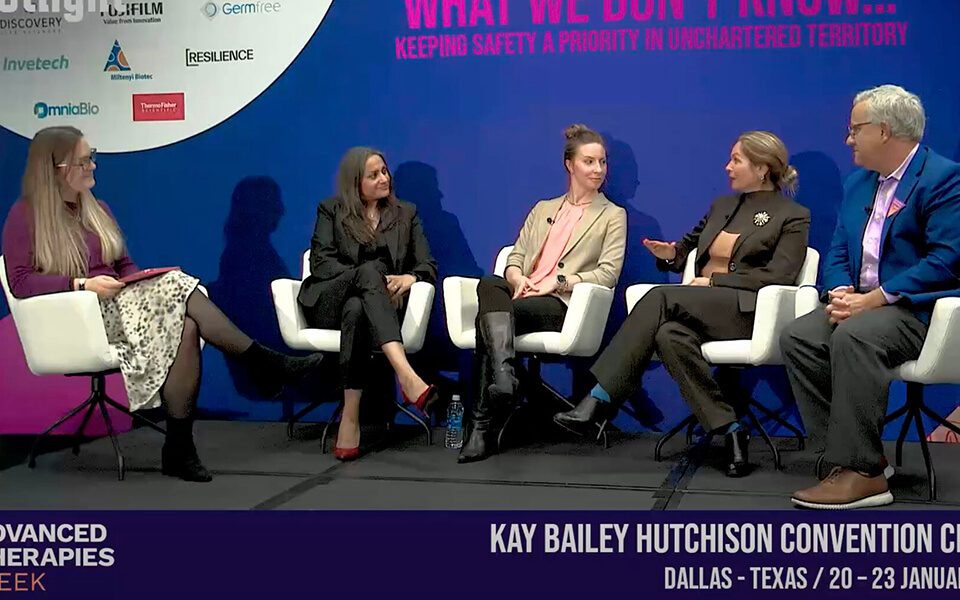We know that the logistics of delivering cell therapies is complex, but what is underappreciated is how that complexity impacts the patient.
Our previous article ‘Leveraging Current Technology and Regulatory Frameworks to Deliver Patient Access Today’, examined some of the significant delays between therapy approval and delivery to patients over the past few years. It also described the evolving regulatory landscape and drive towards alternative, near-patient manufacturing models as a way of improving access to cell and gene therapies.
Heather Purvis, Director of Clinical Operations at Title21, discussed many other barriers to patient access at Phacilitate’s Advanced Therapies week in Miami, Fl. – all through her unique lens of 13 years of experience as an oncology nurse and Clinical Operations Leader. Here’s an overview of Heather’s exploration of how our industry can achieve improved patient access and outcomes. Let’s start with the challenges…
- The biggest challenge we face as an industry is overcoming the delays in getting therapies to patients. These therapies are novel, they’re lifesaving, and they take time. The one thing patients don’t have is time, so we must be masters of getting the infrastructure in place to do this as efficaciously and quickly as possible.
- The second challenge we’re dealing with is a shackling of healthcare institutions in current delivery and expansion. What support do healthcare settings need to be able to deploy some of these novel therapies? Patients need a game-changing therapeutic option, a solution to be able to prolong life or even potentially provide a cure, but aren’t able to access them. Healthcare institutions have been around for over 200 years, but the status quo rigid infrastructure is not going to support what’s coming. We’ve been doing the same thing the same way for 200 years, and now we’re thinking differently about innovation and that infrastructure must change and pivot with us. Can we do that and how do we do that?
- The third challenge to highlight is that of reimbursement and overarching cost. Insurance companies do not necessarily understand or know how to support us in these capacities. The amount that a patient is going to see on a bill is overwhelming. What we feel on the industry side is that to be able to pay for these therapies, we must balance everything and hit that black line to succeed and survive- but so does the patient.
“For an adult patient who has got an oncologic diagnosis, life stops. Everything stops.”
Patient Impacts
So, what does this mean to the patient?
For an adult patient who has received an oncologic diagnosis, life stops. Everything stops. Their focus turns to searching for care and any solution that will get them that opportunity for more days as quickly as possible. They are looking for the right treatments, but this can be hampered by ineffective communication through different (or lack of) healthcare software systems that may not speak to each other, which is a significant source of delays. For example, you would think that in today’s world with current technology it would be quick to receive a donor match, but it’s not, especially for some of our underserved populations who are not connected to top institutions or registries readily.
Then there is the financial impact on the patient, and it’s important to emphasize here that when we think about the dollar, we focus on it, but the patient fixates on it.
I’ve had multiple patients that I have escorted out of clinics in tears that I’ve cried right alongside because they’ve chosen not to go forward with treatment simply because they wouldn’t want to place a financial burden on their family. They don’t think about themselves first; they think about the people around them, so it is our responsibility to prioritize them.
Call for Action
There are two different languages that we need to speak in this industry. The first common language that we all know but we must translate is technology. This is the way that we’re going to be able to get lifesaving therapies to patients faster. The second is the patient’s voice, which can be translated for you via three different angles:
1. INNOVATION
Innovation is one of my favorite things; it is often an overused word and an under-used concept.
Is digitalization contributing to innovation in our industry today? We need to start looking at electronic revolutions and establish how we will use technology for our benefit to decrease time to patient treatment and overall patient burden. There are so many steps within the supply chain process that still rely on paper, phone calls, faxes, emails. Our industry can embrace the use of AI, integration, and automation to be able to support those components and decrease the delays experienced by staff and therefore patients.
There are also a couple of opportunities for sublimation, or elimination of middle steps within process workflows. Much focus within the Clinical Trial realm is based around elimination and optimization of steps needed during cell manufacturing in order to decrease overall time and resource requirements. We need innovation right now to be able to reduce or combine some of those steps and enhance patient access while decreasing costs – the minute that we take out steps, we take out costs.
2. INFRASTRUCTURE
Many healthcare institutions have a physical footprint that they cannot move, one that has been cemented and established from its advent- especially in metropolitan areas where hospital systems are built in a very rigid space. Innovation in these terms is determining, despite this footprint not moving, how to provide a solution that can expand capacity.
Options, previously thought as limited, now may include repurposing novel space above or below, using mobile lab units the size of a semi-truck already outfitted and available in a nearly plug-and-play format that resides in the adjacent staff parking lot. However, this will require new and different stakeholders to work more closely together, leaving manufacturing silos and uniting under the umbrella of the common goal of increased patient access – putting the right technology in the right place at the right time for patient care. Using a fit-for-purpose software system in a prefabricated location can enable those individual components to work together synergistically and create a streamlined infrastructure that better serves patients by simply bridging information-sharing across unrelated spaces.
By forging these partnerships and capitalizing on strengths, we can create an infrastructure that evolves as these new therapies move towards becoming the standard of care and ensure that healthcare is no longer just a static system.
3. IDEATION
Finally, we need to start taking care of the people that are taking care of the people. As a nurse, I was the person at the bedside serving and caring for the patient. As I moved into leadership, I realized that I had to rethink how I was doing patient care. It’s important to emphasize that we are all patient caregivers as well; by caring for those who care for the patient, we are still serving the total purpose.
On the pathway to leadership, it is easy to forget that we have an obligation to take care of the patient. We become removed from the situation and start to focus and fixate on the dollars and numbers. While this is of course imperative, we must also strive to hire the dreamers, the individuals who are patient-centric and patient-focused- those whose passions for others drive best practice and innovation at point of care. Let’s bring that language and perspective back into what we do.
Lastly, learning and collaborating globally is crucial. I have met a lot of colleagues in other countries this week just at this conference with novel best practices emerging. The ability to share those ideas and bring the voice of the patient to the forefront is a recipe for success.
In conclusion, our industry must work together to unpick the complexities of delivering cell and gene therapies. The good news is, the drive and ambition is there. Just a week after Heather gave this presentation, Kite announced that it had received FDA approval for a manufacturing process change that provides a two day reduction in the median turnaround time (TAT) for Yescarta going from 16 days to 14 days.
This may not sounds like a huge amount of time, but to a patient, it’s crucial. Our mission should be to get life-saving therapies to patients as quickly as possible, and the more time we can give back to the patient, the better the outcomes.
These manufacturing efficiencies are essential in reducing the TAT but are one contributing factor. We believe that alongside digitalization and automation, even more time can be saved.







